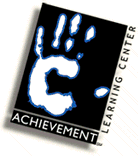
(512) 263-4300
Tutoring in Lakeway, TX. Achievement Learning Center - Tutoring, Evaluation and SAT/ACT Test Prep
Serving The Lake Travis Area and Beyond...
Testing/Assessment and Learning Deficits - FAQs
There are many questions and issues surrounding standardized testing, academic assessment and learning deficits. Hopefully, these FAQs will help asnwer some of those. Of course, we are always glad to answer any questions...
What are standardized tests?
Standardized tests are the accepted "norm" for measuring a student’s academic skills. Educators nationwide use these tests as a basic measurement to evaluate students’ performance, or a school’s curriculum.
Why do schools use standardized tests?
Because standardized tests are the accepted "norm" nationwide, educators and administrators alike are able to evaluate the individual success of an entire school district, school, or student. The results of these evaluations help administrators make accurate decisions regarding those school systems’ programs
What’s the difference between norm-referenced and criterion referenced tests?
Norm referenced tests compare your child to other children of the same age or grade level, usually on a national level. The results indicate how far above or below "average" your child is functioning in a given skill area. Criterion referenced tests compare your child’s skills to a specific level of performance – they measure what has been learned. For example, in testing math skills, a criterion-referenced test might identify how many basic math facts 1 – 10 your child has learned.
What does it mean that a test is designed for individual administration?
"Individualized" administration versus group administration refers to a one-on-one testing session versus classroom or group administration. Individual administration allows for observations by the test administrator, which can be effective when designing an educational plan. Most students will do their very best in a one-on-one testing situation. At Achievement Learning Center, the main tool for evaluating a student’s academic standing and potential is the Woodcock-Johnson Achievement Test. This test is an individually administered test.
What should I ask my child’s teacher?
Before taking a standardized test, it is good to ask the following questions:
-
Should my child practice before taking this test?
-
How will the results of this test be used by either the educator or by the school?
-
Which tests will my child be taking during this year, and what are they for?
-
In addition to these tests, how else will my child’s academic performance be evaluated by the teacher or by the school?
What is a learning disability?
A learning disability is a disorder in understanding or using spoken or written language. Individuals with learning disabilities have average to above average intelligence, but experience problems in reading, writing, listening, speaking, concentration, and/or mathematical calculations.
Dyslexia is a type of learning disability that involves reading difficulties. The term learning disability, for example, doesn’t apply to children who have vision and hearing handicaps, mental retardation, emotional disturbance, or environmental, economic or cultural disadvantage.
How are learning disabilities caused?
Many times learning disabilities are inherited. However, often the origin is unknown. There are known risk factors such as low birth weight, stress before or after birth, infections of the central nervous system and severe head injuries.
There is little scientific evidence to show that poor vision, abnormal focusing, jerky eye movements and misaligned or crossed eye cause learning disabilities. Instead, research points to a brain’s disability to interpret what is read. Normally, when we read, our brain relates visual images to previous experiences and known information (such as the meaning of words). A learning disability is a defect in these processes to the brain.
What are some signs of a learning disability?
Preschool
-
Late talking, compared to other children.
-
Pronunciation problems.
-
Slow vocabulary growth, often unable to find the right word.
-
Difficulty rhyming words.
-
Trouble learning numbers, the alphabet, days of the week.
-
Extremely restless and easily distracted.
-
Trouble interacting with peers.
-
Poor ability to follow directions or routines.
Grades K-4
-
Slow to learn the connection between letters and sounds.
-
Confuses basic words (run, eat, want).
-
Makes consistent reading and spelling errors including letter reversals (b/d), versions (m/w), transpositions (felt/left), and substitutions (house/home).
-
Transposes number sequences and confuses arithmetic signs (+, -, x,/, =).
-
Slow recall of facts.
-
Slow to learn new skills, relies heavily on memorization.
-
Impulsiveness, lack of planning.
-
Unstable pencil grip.
-
Trouble learning about time.
-
Poor coordination, unaware of physical surroundings, prone to accidents.
What are some common learning disabilities?
Dyslexia - a language-based disability in which a person has trouble understanding words, sentences, or paragraphs.
Dyscalculia - a mathematical disability in which a person has a very difficult time solving arithmetic problems and grasping math concepts.
Dysgraphia - a writing disability in which a person finds it hard to form letters correctly or write within a defined space.
Auditory and Visual Processing Disabilities - a sensory disability in which a person has difficulty understanding language despite normal hearing and vision.
How are learning disabilities treated?
A child with a learning disability needs to practice academic skills and learn helpful strategies with the aid of a trained specialist. The evaluation is handled by educators and typically involves educational and psychological testing. A thorough medical eye examination can discover a visual defect that may affect reading. Once the evaluation process has determined that a learning disability exists remedial training should be done by a certified learning disabilities specialist or tutor in special classes or schools.
With the proper help, children with learning disabilities can become very successful. Thomas Edison and Albert Einstein, for example, had learning disabilities, but went on to make great contributions during their lives.
